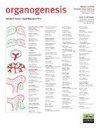生物可吸收聚乳酸支架与金属支架在猪髂动脉早期血管形态变化的比较
IF 2.8
4区 生物学
Q4 BIOCHEMISTRY & MOLECULAR BIOLOGY
引用次数: 5
摘要
摘要生物可吸收支架有可能克服与金属支架相关的几个问题。用于治疗外周动脉疾病的生物可吸收聚-L-乳酸(PLLA)支架植入已在动物模型和临床试验中报道;然而,尚未报道使用血管内超声(IVUS)分析对PLLA支架和裸金属支架(BMS)的早期血管形态变化进行比较的研究。在本研究中,将PLLA支架和BMS双侧植入五只小型猪的髂动脉中。在支架植入前后以及6周随访时进行数字减影血管造影术和IVUS。所有PLLA支架和BMS在6周的随访中均为专利。根据IVUS分析,PLLA支架和BMS之间的狭窄百分比没有显著差异(65.7%对67.2%,P=.761)。此外,血管管腔变化百分比也没有显著差异。PLLA支架的新生内膜形成(新生内膜面积加上内侧面积)明显少于BMS(15.65 mm2对25.69 mm2,P<.001)。总之,根据IVUS结果,PLLA支架植入猪髂动脉后的短期结果与BMS相当。因此,PLLA支架植入外周动脉是安全可行的。本文章由计算机程序翻译,如有差异,请以英文原文为准。
Comparison of early vascular morphological changes between bioresorbable poly-L-lactic acid scaffolds and metallic stents in porcine iliac arteries
ABSTRACT Bioresorbable scaffolds have the potential to overcome several problems associated with metallic stents. Bioresorbable poly-L-lactic acid (PLLA) scaffold implantation for the treatment of peripheral artery disease has already been reported in animal models and clinical trials; however, no studies comparing PLLA scaffolds and bare metal stents (BMSs) with regard to early vascular morphological changes, identified using intravascular ultrasound (IVUS) analysis, have been reported. In this study, PLLA scaffolds and BMSs were implanted bilaterally in iliac arteries of five miniature pigs. Digital subtraction angiography and IVUS were performed before and immediately after stent implantation and at 6-week follow-up. All PLLA scaffolds and BMSs were patent at 6-week follow-up. Per IVUS analysis, the percent area stenosis did not significantly differ between PLLA scaffolds and BMSs (65.7% vs. 67.2%, P = .761). Furthermore, percent vessel lumen change also did not differ significantly. Neointima formation (the neointimal area plus medial area) was significantly less with PLLA scaffolds than with BMSs (15.65 mm2 vs. 25.69 mm2, P < .001). In conclusion, based on IVUS results, short-term results after stent implantation in porcine iliac arteries were comparable between PLLA scaffolds and BMSs. Therefore, PLLA scaffolds are safe and feasible for implantation in peripheral arteries.
求助全文
通过发布文献求助,成功后即可免费获取论文全文。
去求助
来源期刊

Organogenesis
BIOCHEMISTRY & MOLECULAR BIOLOGY-DEVELOPMENTAL BIOLOGY
CiteScore
4.10
自引率
4.30%
发文量
6
审稿时长
>12 weeks
期刊介绍:
Organogenesis is a peer-reviewed journal, available in print and online, that publishes significant advances on all aspects of organ development. The journal covers organogenesis in all multi-cellular organisms and also includes research into tissue engineering, artificial organs and organ substitutes.
The overriding criteria for publication in Organogenesis are originality, scientific merit and general interest. The audience of the journal consists primarily of researchers and advanced students of anatomy, developmental biology and tissue engineering.
The emphasis of the journal is on experimental papers (full-length and brief communications), but it will also publish reviews, hypotheses and commentaries. The Editors encourage the submission of addenda, which are essentially auto-commentaries on significant research recently published elsewhere with additional insights, new interpretations or speculations on a relevant topic. If you have interesting data or an original hypothesis about organ development or artificial organs, please send a pre-submission inquiry to the Editor-in-Chief. You will normally receive a reply within days. All manuscripts will be subjected to peer review, and accepted manuscripts will be posted to the electronic site of the journal immediately and will appear in print at the earliest opportunity thereafter.
 求助内容:
求助内容: 应助结果提醒方式:
应助结果提醒方式:


